Novelty & Complexity: 13 Youth Onramps
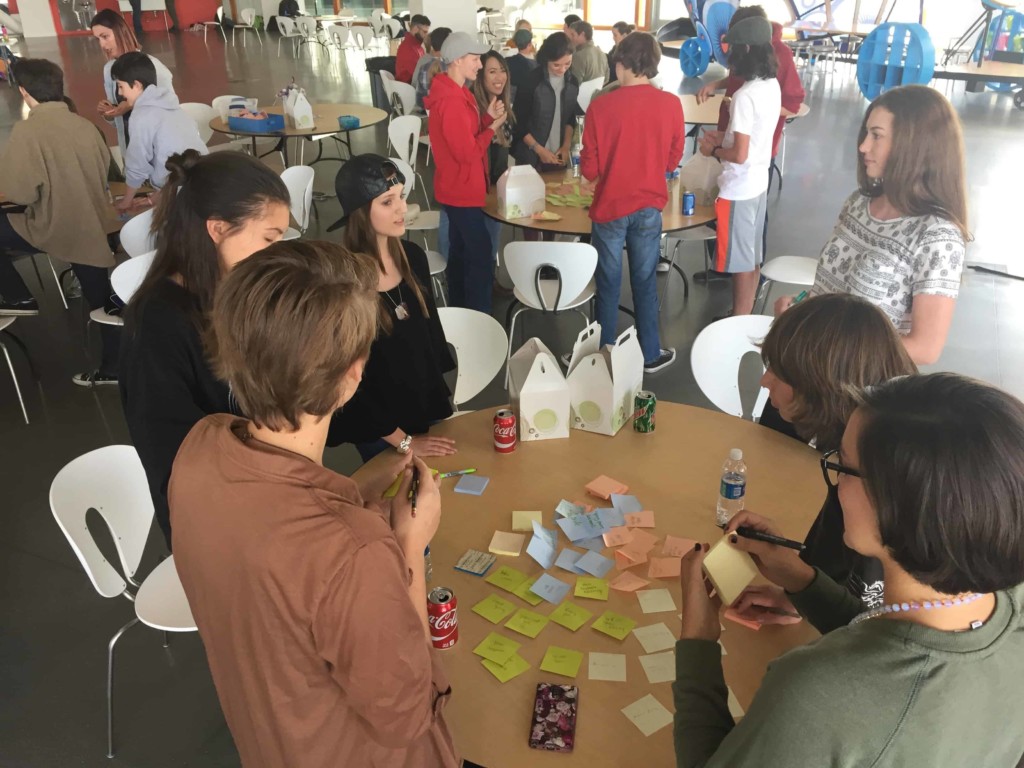
“This is the time for every artist in every genre to do what he or she does loudly and consistently. You’ve got to keep asserting the complexity and the originality of life, and the multiplicity of it, and the facets of it. This is about being a complex human being in the world, not about finding a villain. This is no time for anything else than the best that you’ve got.”
― Toni Morrison
The world is getting more complex. Globalization makes every sector more competitive. The growing influence of China and India make westerners feel slightly less relevant. Every week we hear about human systems—power grids, political systems, stock markets or media machines—interacting in unpredicted ways. Climate change and existential threat loom in the background.
Our civic infrastructure can’t keep up with all of this change. As a result, trust in public institutions is at an all-time low. Truth has become an artifact of curation rather than verification. This election cycle made it clear that people are angry and confused.
What’s driving the accelerated rate of change and the associated angst? Don’t blame illegal immigrants—they’ve been leaving faster than coming for a decade. Don’t blame trade deals, because NAFTA has boosted trade and saved all of us a couple hundred bucks a year at Wal-Mart. You could blame corporate offshoring—but that is really just people in other countries hoping for a shot at a middle-class lifestyle.
Blame the technology. The tools we all use are improving so fast that the rules of the game are being rewritten every day. This is what it feels like to live on a curve of exponential technology where change happens faster than we anticipate—where people that figure out how to ride the connected global cloud-based economy thrive and those that don’t feel left out. (With thanks to WaitButWhy, the picture below compares your linear perception of how things should be with the new exponential reality).

What’s it like to grow up in this unforgiving economy? Four of 10 high school students will end up freelancing. An equal number will likely manage a sequence of projects for a company. Many will jump back and forth from employed to self-employed—distinctions that will become less useful of employment status (see Generation Do It Yourself). Careers are becoming a series of projects. Agility, agency and advocacy trump control and compliance.
Here’s the thing—the rapid and ubiquitous rise of artificial intelligence means the the curve just got steeper. Over the next 15 years smart machines will eat jobs—except where smart people create them. The near future is fast-paced and project-based—it will reward programmers and people who know how to leverage programmers (Tom Davidson discussed all the light-footed options with Gayle Allen).
What Should Grads Know and Be Able to Do?
School and system heads should lead community conversations around three questions
- How has the world changed?
- What should graduates know and be able to do?
- What learning experiences will build desired knowledge, skills and dispositions?
Tony Wagner taught me these conversation starters in 1994 as a new superintendent, and we’ve both seen these questions lead to hundreds of productive outcomes. Many school districts (including Denver, El Paso, Houston and Marion, Ohio) have facilitated community conversations to update graduate profiles. These broader aims included self-management, directed learning and an appreciation for effort, initiative and collaboration (the Hewlett Foundation calls this deeper learning).
In particular, the rise of machine intelligence and the automation economy suggests that young people will face waves of novelty and complexity—new situations and increasingly complex systems. Navigating these choppy waters will require confidence in attack skills combined with humility in the face of a steep learning curve; they’ll need to be comfortable sprinting to public deliverables with diverse teams and deploying smart data tools to augment team intelligence.
Novelty & Complexity
Most schools are low novelty and complexity—they value routines and bite size chunks of discipline-based, easily assessed learning.

How can we increase exposure to novelty and complexity to build the mental muscles to thrive in the automation economy? Following are 13 approaches to introducing novelty and complexity. With supportive services and culture, think of them as 13 “on ramps” for the brave new world.
1. Project-based learning. Multi-step activities that result in a public product can boost student agency, problem-solving and collaboration. Resources and examples include:
- The Buck Institute Gold Standard for project-based learning includes challenging problems, sustained inquiry, authenticity, student voice and choice, reflection, critique and revision and public product.
- Denver School of Innovation and Sustainable Design is a district incubated, Carnegie-supported next generation high school.
- Katherine Smith Elementary encourages teams of students to develop driving questions that turn into project objects; finished products are shared with the community on exhibition nights.
- One Stone is a new microschool in Boise where students engage in design challenges–including designing their own school culture (featured image).
2. Big integrated projects. Secondary schools usually teach discrete subjects. A new generation of schools is busting old barriers to engaging in real world problems.
- High Tech High in San Diego encourages teachers to construct integrated design challenges; teachers can learn how to do this at the HTH GSE.
- Bulldog Tech, like Katherine Smith Elementary, is part of the New Tech Network and features wall-to-wall project-based learning.
- Framing projects around the UN’s #GlobalGoals (sometimes called challenge-based learning) is a great way to spur applied and integrated learning
- Chavez Schools teaches agency and advocacy through a sequence of projects that take advantage of location in the nation’s capital.
- Olin College is a great HigherEd example of a program based on hands-on integrated projects.

3. Makerspace. Creating space and time for maker activities is a great way to introduce novelty and complexity. Check out Lindsey Own’s blog series on creating a makerspace (including her latest post on space requirements).
4. STEM challenges. Students at Harmony Public Schools (described in this report) work with teachers to design plans for projects ranging from small and narrow to large and integrated:
- Level I: Short-term projects target 21st century skills within the context of the curriculum.
- Level II: Long-term interdisciplinary projects connect STEM curriculum to the humanities through rich, meaningful and rigorous cross-disciplinary and multi-sensory projects that allow the application and development of critical 21st century skills.
- Level III: Student-driven projects, either individual or team, usually supported by a mentor or sponsor from the community. Level III projects include advanced research projects such as science fairs, advanced STEM challenges such as science Olympiad, rocketry, and maker and robotics projects.

5. #PlacedBasedEd. Learning experiences that take advantage of geography and local assets to create authentic, meaningful and engaging personalized learning for students are often called place-based education (PBE). A field trip linked to a project or an outdoor science experiment can be a great way to introduce novelty and complexity.
Nate McClennen of Teton Science Schools said good PBE has five traits: connection and relevance, partnerships and permeability, inquiry and design, student-centered, and interdisciplinary.
6. Foreign travel. With support from an affiliated nonprofit, over 70 percent of the low-income students at Kansas City’s University Academy travel internationally. For many students, it’s their first trip out-of-state. Superintendent Tony Kline said the trips are often life changing and prepare the students to leave home, live independently and feel included at college.
7. Debate. Many students at University Academy participate in debate class and club. Klein thinks it’s great practice in going deep into developing and forcefully sharing a fact-based point of view.
“Critical thinking and argument skills—the abilities to both generate and critique arguments—are crucial elements in decision-making… In all careers, academic classes and relationships, argument skills can be used to enhance learning when we treat reasoning as a process of argumentation, as fundamentally dialogical and as metacognitive…It is imperative that high school students of diverse personal, moral and intellectual commitments become prepared to confront multiple perspectives on unclear and controversial issues when they move on to college and their careers,” said Rabbi Shmuly Yankiowitz.
8. Good books. The Great Books program engages students in challenging literature instead of cartoony, dumbed-down stories. The high school day at Great Hearts Academy starts with Humane Letters, a two-hour Socratic seminar where students read great books and the founding documents. They ask, what does it mean to be human? What is justice? Students apply two rules: textual evidence and reason in the common pursuit of truth. Students form habits of real conversation, and not a debate, winner-takes-all approach. Seniors write a thesis and defend their work in front of a panel and their peers.
9. Publications. Students at Palo Alto High School produce 10 world-class publications. Student teams write and edit stories, develop compelling graphics and struggle with real deadlines.
“Today we are preparing kids for a world we cannot even conceptualize,” said journalism superstar Esther Wojcicki. “They need to think, not follow directions. We need to move forward, take a risk; we have the tools and the skills to change the classroom and make learning exciting and relevant for all students.”

10. Performance. At first glance, the sheet music for a musical can be daunting—and the commitment to mastery in a matter of weeks can seem maddening. But breaking down the challenge into individual and group tasks makes it all come together. Mary Ryerse described the Power of the Performing Arts, noting that music is powerful in ways that can’t adequately be explained.
11. Early college. At early college high schools, students are challenged to take college level classes. At Quest Early College north of Houston, 90% of students leave with an AA degree. The challenging service learning program is another way they introduce students to new and complex situations.
12. Work-based learning. What could be scarier than walking into a new work setting? The Big Picture and NAF school networks ease the transition by preparing both student and supervisor for productive work-based learning experiences that build on student interests and challenge them in new ways.
13. Ask the kids. When I asked leaders at the iNACOL Symposium how they’ve introduced novelty and complexity, many said they had asked the kids what they wanted to learn about. A growing number of schools are following the lead of Google and giving students a portion of their time to conduct independent studies.
Complexity Prep
A student dealing with trauma at home won’t deal with complexity at school. Getting kids ready to successfully deal with new and complicated situations requires attention to the whole child. ASCD suggests we should pay attention to health, safety, engagement, support and challenge.
Texas ASCD (where we recently spent time discussing novelty and complexity) outlined the necessary shifts from delivery to design, conformity to creativity, isolation to integration, accountability to ownership and whole class to whole child.
Challenging work requires on-ramps for kids living in challenging circumstances. Operation Breakthrough in Kansas City is one of the best and largest examples I’ve seen of an intentional and innovative childhood development program with robust wraparound services that close the school readiness gap.

Music therapists track the language development, self-regulation and social interaction of every student, every day. Makerspace teachers support learning through cooking, coding, cutting and pasting. Social workers check in on challenges. That’s the kind of intentional and supportive development it takes to get learners ready to cope with novelty and relish complexity.
For more see:
- Smart Machines Will Eat Jobs—Except Where Smart People Create Them
- Living With Smart Machines
- Building the Ability to Work Alongside Machines: 10 Lessons from Peter Schwartz
- Cause + Code: The New Impact Formula
Stay in-the-know with all things EdTech and innovations in learning by signing up to receive the weekly Smart Update.



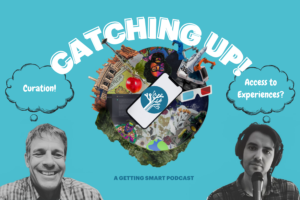

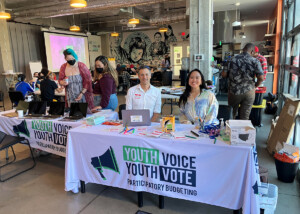
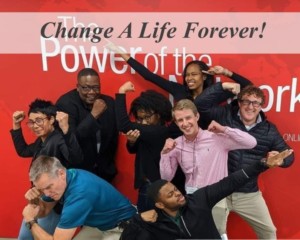
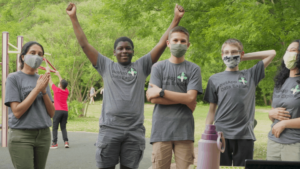
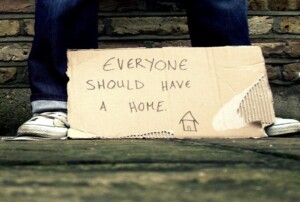
Milton Chen
A great summary of 13 "movements" redesigning our education system. Also speaks to powerful learning in and out of school.